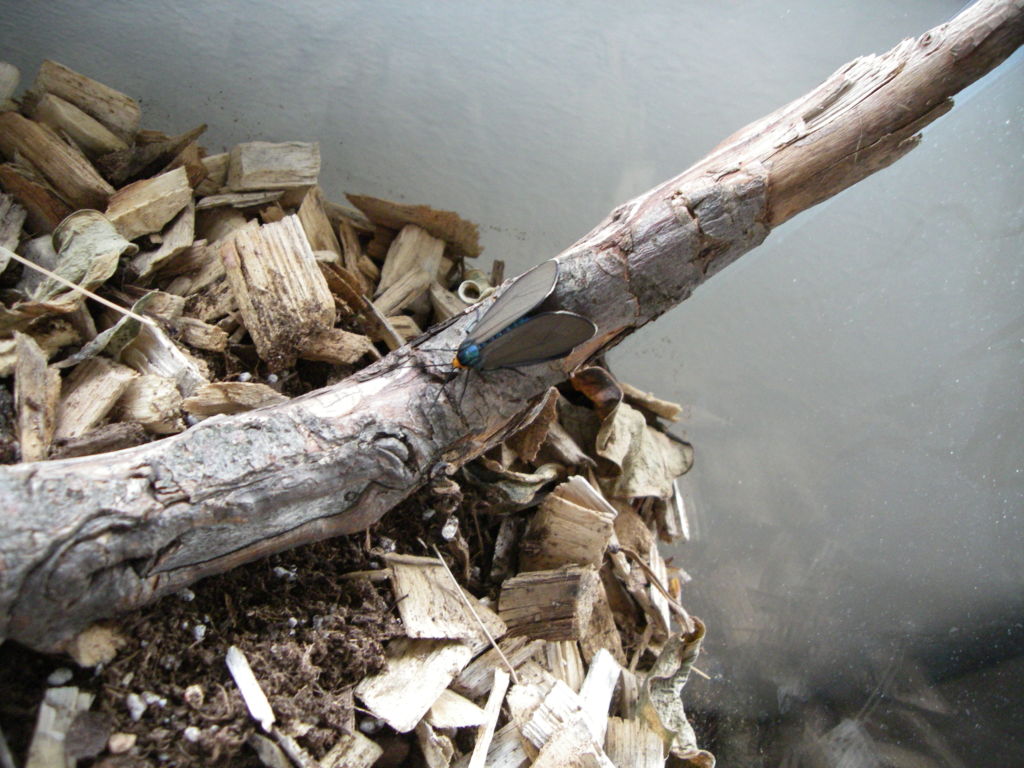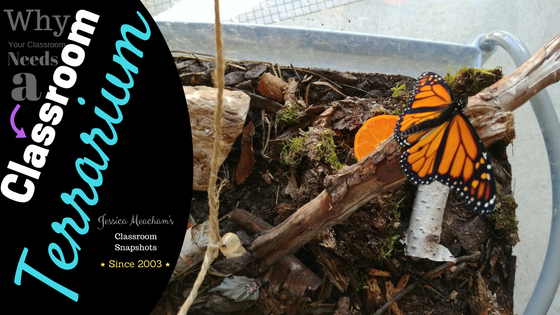Establishing a terrarium in our classroom wasn’t a planned event. It happened because one of my kids brought in a cocoon and we needed a place to put it.

I thought it might be nice to put it behind glass so that they could observe, ask questions, and make predictions. We had hoped that whatever it was would emerge before school let out for the summer– but it didn’t, so I took the terrarium home and emailed updates to my students’ parents.

My students’ excitement for the summer news was fun to see, so bringing the terrarium back to school once summer ended was a no-brainer. I wanted to replicate that curiosity and engagement throughout the year. Our short time with it that past spring was proof to me that a classroom terrarium is a powerful learning tool. One that every student should have access to. This school year, the terrarium celebrates it’s eleventh year in my classroom. It’s been a wildly, fun experience. Read on to learn more!
A lot of teachers ask me why I don’t have a permanent classroom pet. Truthfully – my first answer comes from a place of selfishness — I really don’t want to put in the time, money, and energy that a classroom pet takes. I’ve had them before. Fish — lots of time and effort to keep them healthy and alive. Same with the hedgehog I once had. Luckily that year two of my parents were veterinarians — so they could fix her prolapsed uterus and diagnose a broken foot (those things are escape artists, I tell ya!).

Having a classroom terrarium that houses temporary critter visitors is more my style. They come and they go! We enjoy them for a short time, and then say goodbye. While they visit we read about them, watch videos that we find on the Internet, ask “wonderings” and observe them. Sometimes I even find time to have a little personal 1:1 interaction time with the critters!

At times we have a variety of critters that are in the terrarium at the same time. While we try our best to make sure they’ll live harmoniously together — we’ve unexpectedly learned about predator and prey a few times! We care for our critters — this means we feed them (these planned predator and prey interactions are not only observed, but discussed, so that all students understand why it’s a necessary part of life). We also make sure the terrarium habitat is “just right” for them. This means we change the terrarium’s environment based on the visiting critter’s needs. Every once in awhile they make themselves so comfortable they leave offspring behind– YIKES!

One of my favorite critter visitors to have are Praying Mantises. I find them fascinating to watch! I was ecstatic when one laid an Ootheca. I got on Facebook right away to announce that “We’re Having Babies” — only to have a friend share that we’re only having babies if it was fertilized. Months of waiting– it wasn’t. BUT— good news!! Guess what’s in our terrarium RIGHT NOW? Two oothecas!!! I can’t wait for spring to arrive to see if they hold babies.

When students move onto the next grade level, they don’t stop thinking about our terrarium. In fact, it seems, sometimes, that the entire school is in on the action! We often have others from outside of our classroom community bringing in critter visitors. It is not uncommon for me to get a text from a former parent sharing what he’s found for our terrarium — he’s an arborist, so he finds really neat critters!

One of the best technology additions I’ve added to our classroom is a digital microscope. I created a Donor’s Choose project for it and it was funded after a few days. We get a lot of use out of it! Students are easily able to use it too. It is able to take photos as well as video footage! Check out some up close photos we took of a bumblebee we found just outside of our classroom one day (it was nearly dead, so we felt safe working with it).


Over the years we’ve had the following critters in our terrarium:
- ants
- bee
- bearded dragon
- butterflies
- caterpillars
- cicada grubs
- crickets
- frogs
- grasshoppers
- katydids
- moths
- salamanders
- slugs
- snails
- snakes
- spiders
- toads
- turtles
- moths
- praying mantises
- worms
This year when my students wrote their Talking Animal Reports, we focused our topics on Terrarium Visitors. We used the apps Hello Crayons, Chatter Pix, and Seesaw. Check this one out — it’s about butterflies!
You can access the rest of the reports by clicking the image below!
A few years ago I had the privilege of presenting at the National Rural Education Conference in San Antonio, TX. My presentation focused on “Life Lessons of a Classroom Terrarium” — Enjoy!
Do you happen to have a classroom terrarium? What critters have you housed in yours?





No Comments